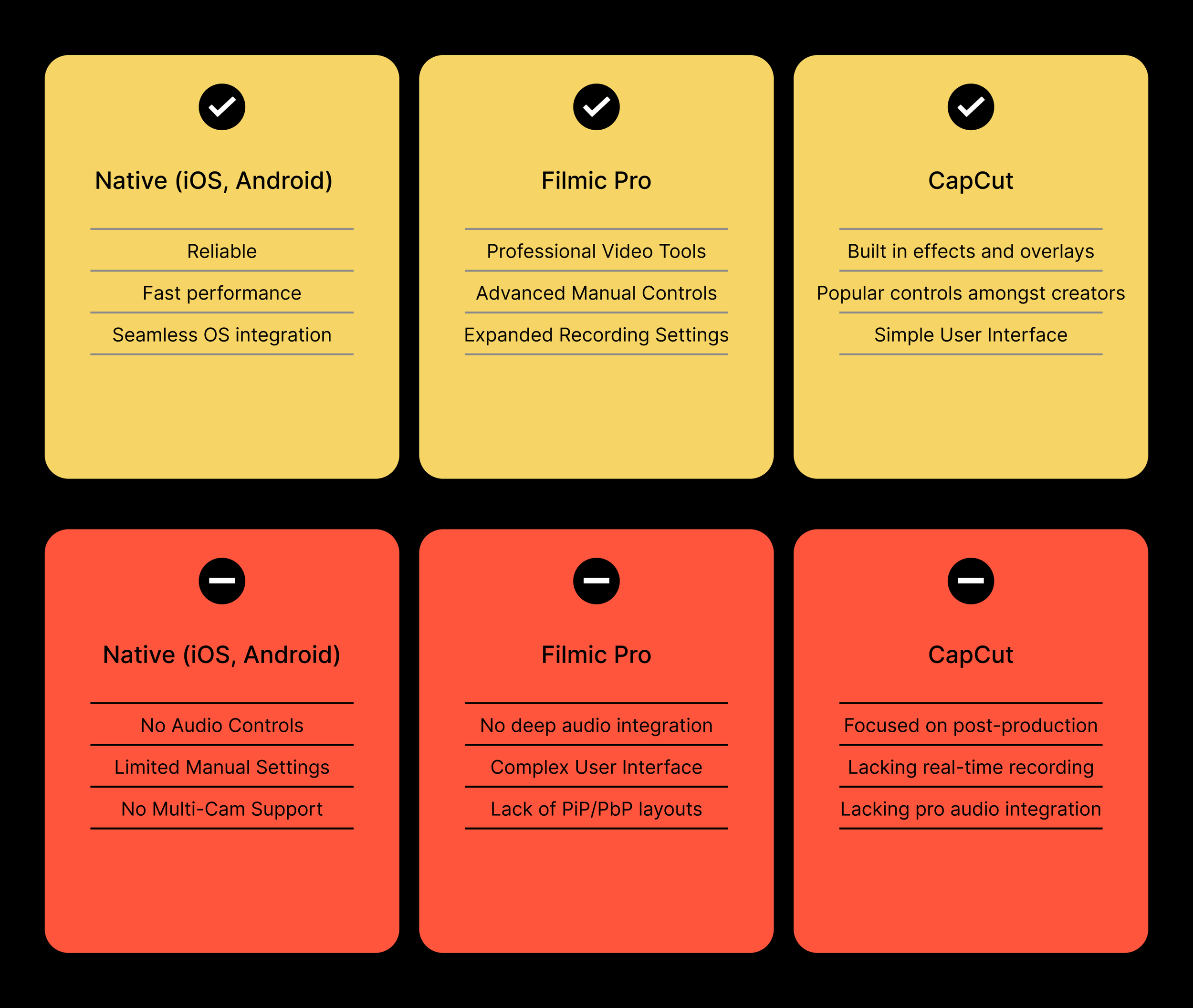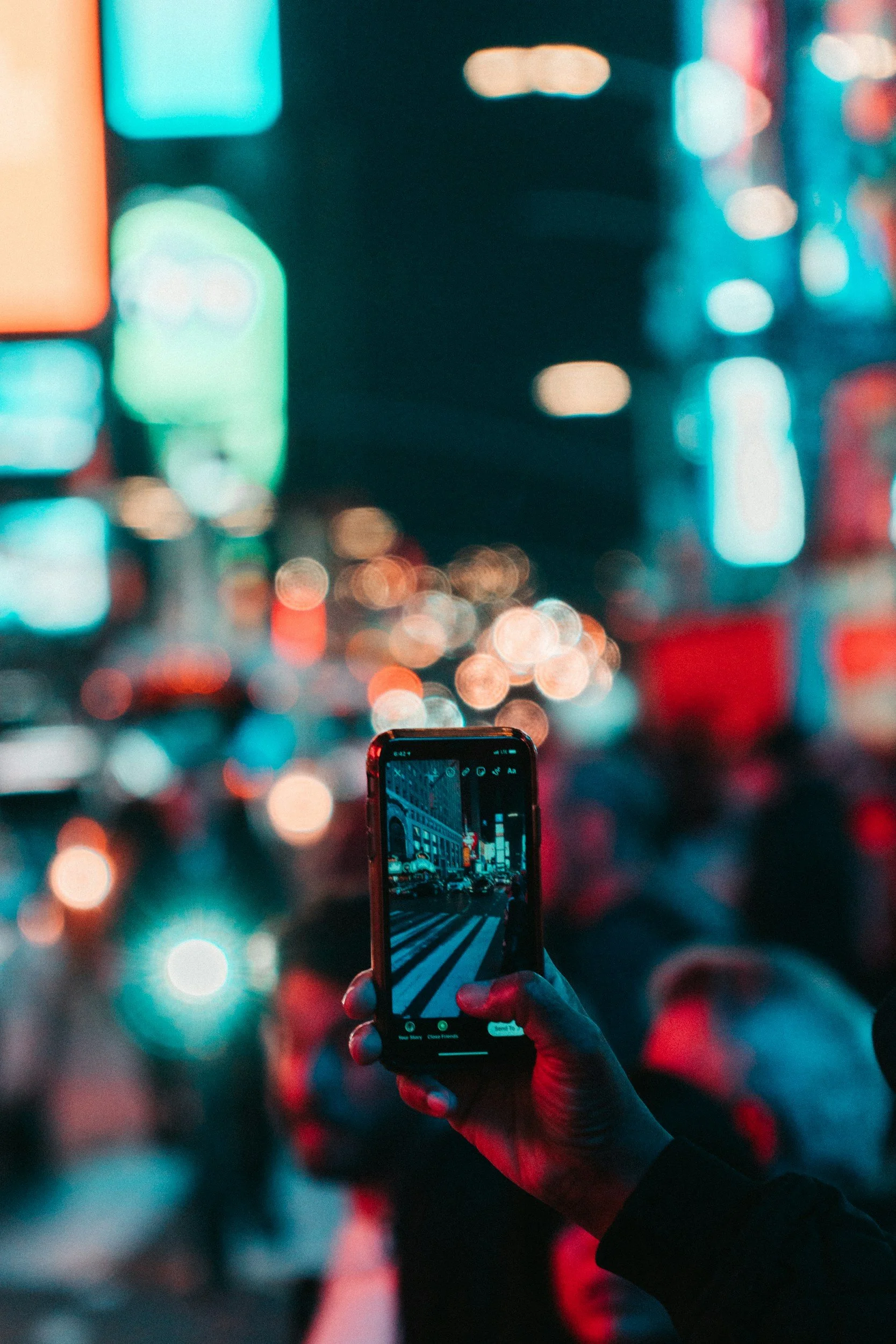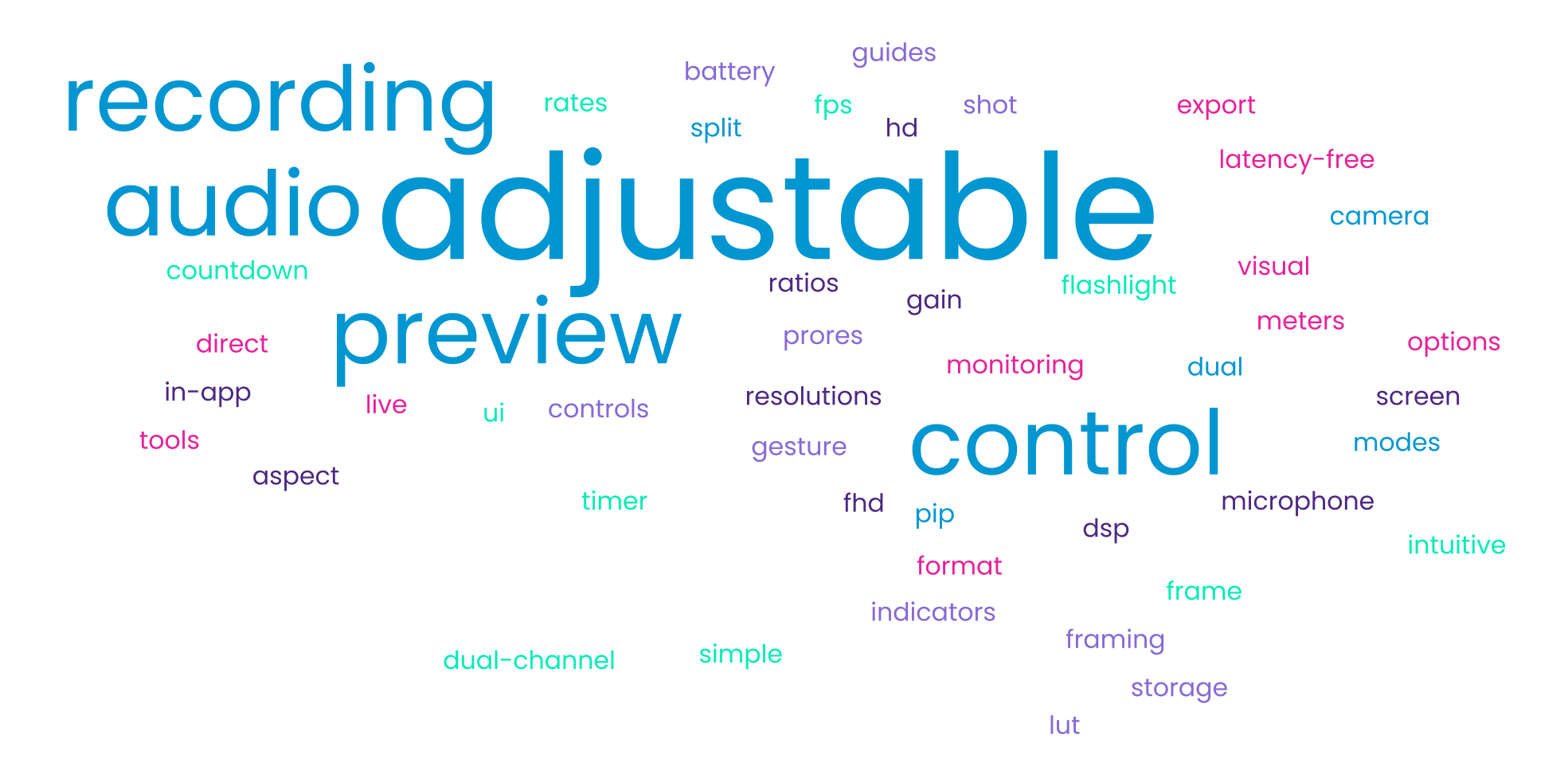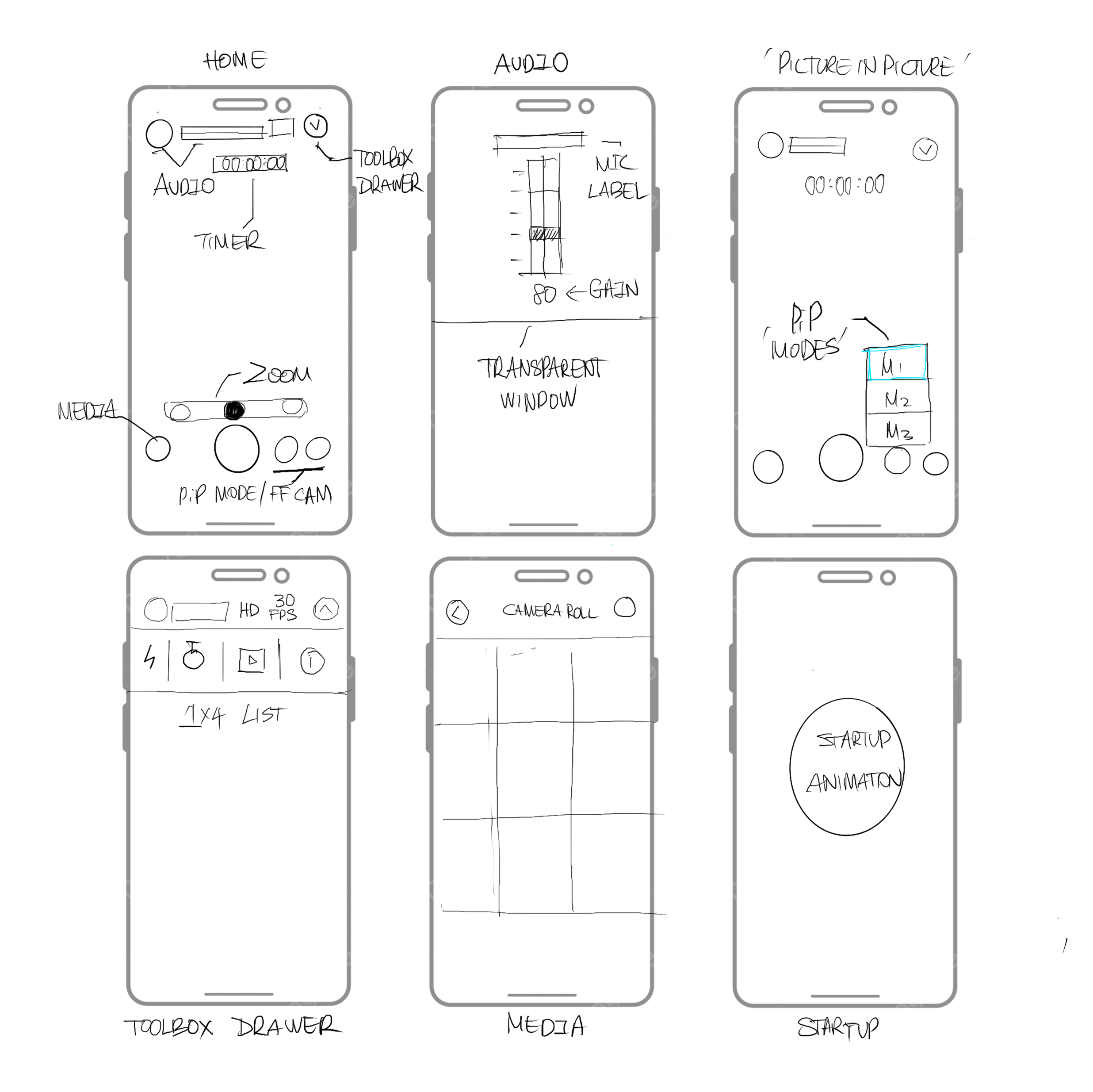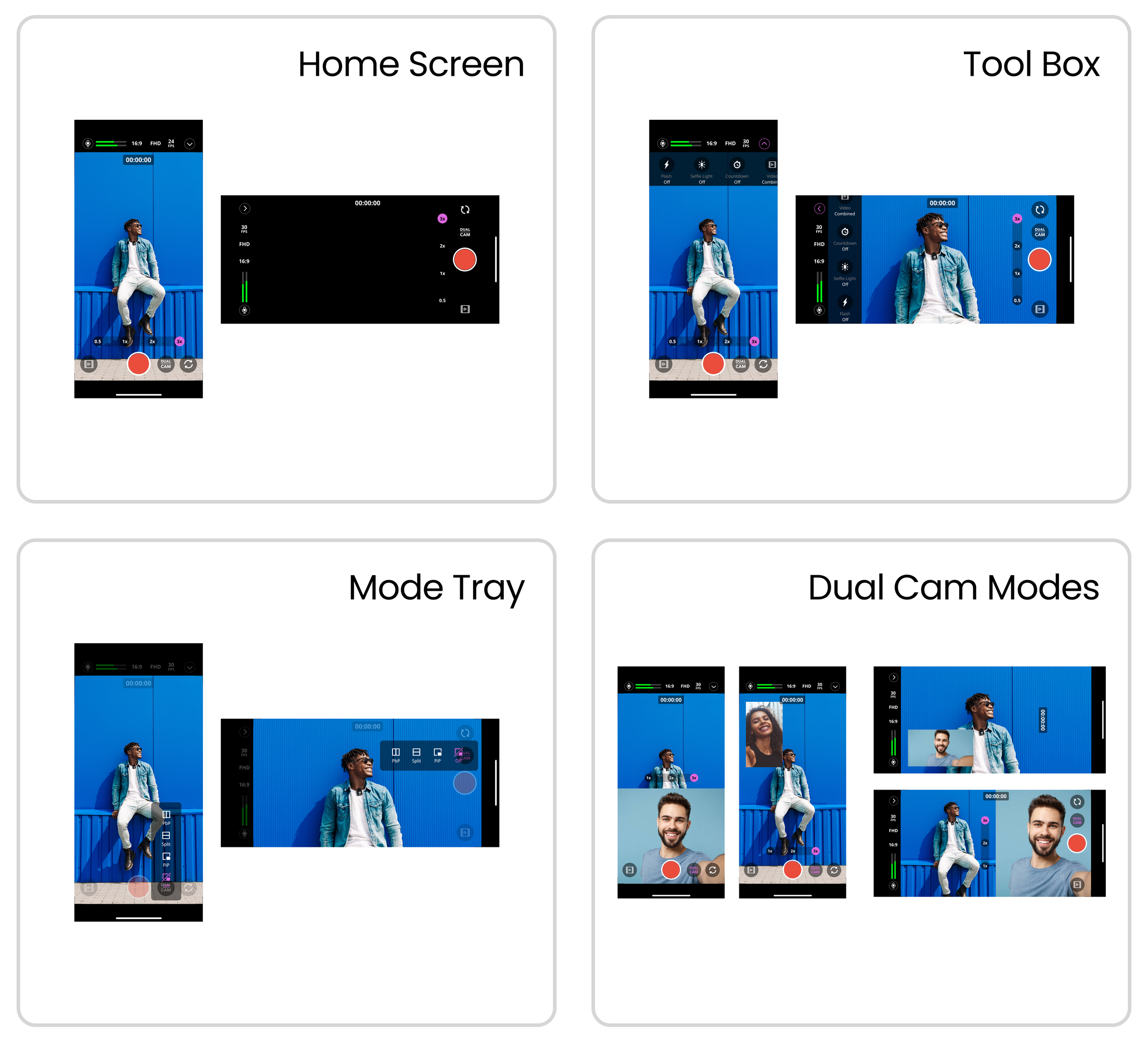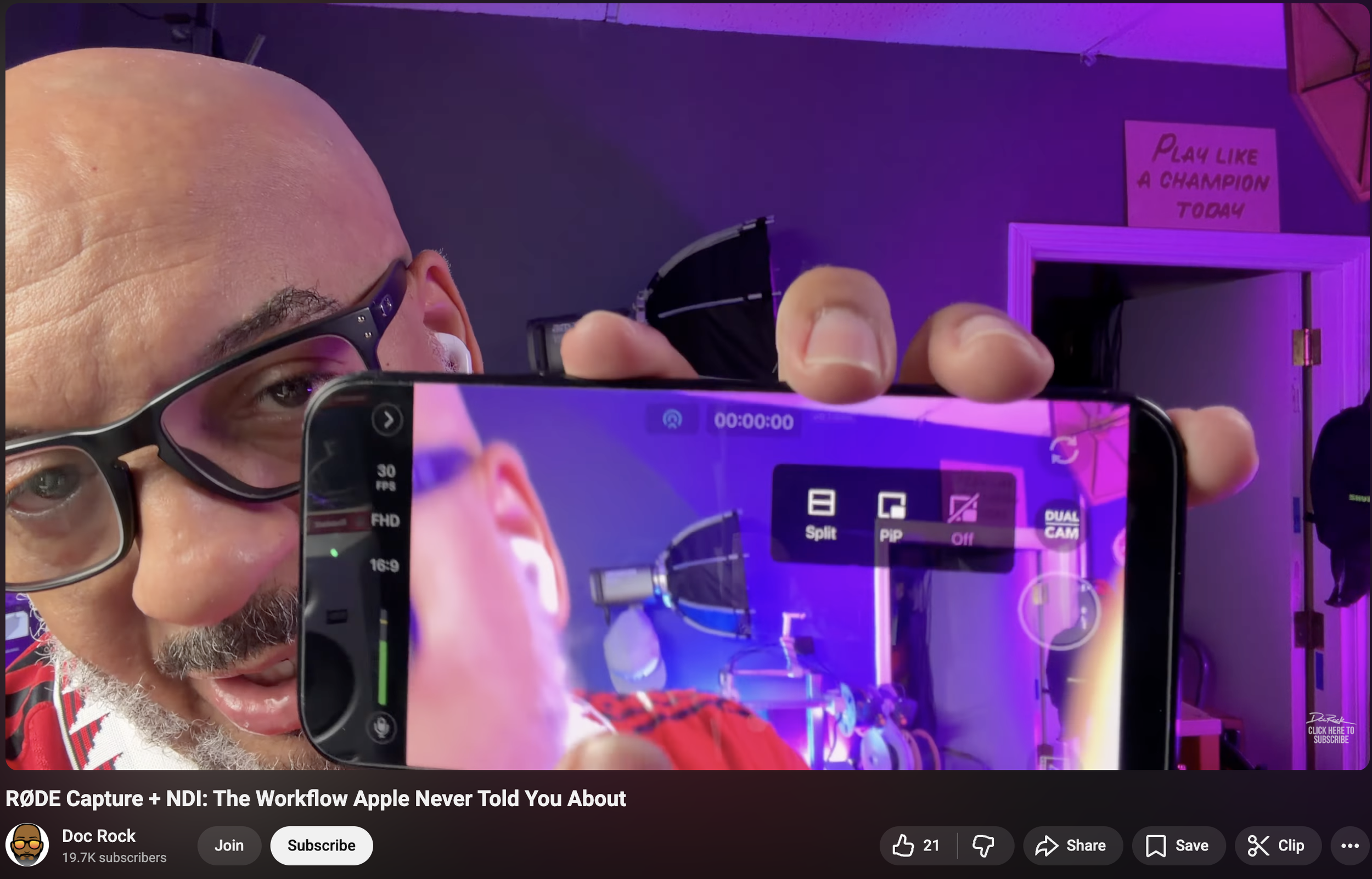RØDE Capture
REDEFINING CONTENT CREATION
Creators using RØDE microphones had access to industry-leading audio quality, but when it came to capturing video, they were forced to rely on third-party apps—none of which could fully harness the power of our onboard processing.
Creators need more than just great audio…
In today’s content-driven world, audio and video go hand in hand. However, most mobile camera apps aren’t built with creators in mind and they lack powerful but intuitive audio controls, forced workarounds for multi-camera recording.
User Pain Points
| User Need | Pain Points | User Requests/Solutions |
|---|---|---|
| Great audio without extra steps | Third-party apps lacked proper mic integration; required separate audio recording & syncing. | Direct microphone processing integration for best sound quality. |
| Multi-camera support for content | Switching between cameras mid-recording was clunky; required multiple devices or external editing. | Live, real-time PiP and PbP video recording support. |
| Better low-light filming on mobile | Filming in imperfect lighting required extra equipment; screen brightness hacks were inconsistent. | Built-in selfie light for better front-facing recording. |
| A seamless, all-in-one workflow | Switching between apps for audio, video, and overlays disrupted workflow; slowed down content creation. | Intuitive controls and a streamlined experience in a single app. |
Research and Benchmarking
Every app approached video recording differently. Some prioritised manual controls; others focused on ease of use. But when it came to creators’ needs, gaps remained.
We analysed their strengths, pinpointed their limitations, and set out to bridge the gap with a creator-first solution.
Design
Designing for creators
Before designing solutions, we needed a clear framework—a set of non-negotiable design principles that would shape every decision we made.
The goal wasn’t just to build a better camera app, but to create a seamless tool that felt like an extension of a creator’s workflow.
Ditching User Personas
While personas can help summarise research, I took a different approach. Relying too heavily on assumptions can introduce bias, so I focused on direct conversations with creators to ground the design process. The insights gathered later informed more accurate, behaviour-based personas.
We invited a range of creators — from vloggers to short-form storytellers — to join contextual inquiry sessions with their full gear setups. While we had prepared questions, the most valuable insights came from simply watching them work.
Some used native camera apps and edited in CapCut. Others preferred in-app recording within social platforms. Regardless of tools, editing was a constant, and workarounds were common. These patterns helped shape key design decisions moving forward.
Ideation
With a clear design framework in place, it was time to bring the vision to life. Wireframes turned into prototypes, refining every interaction to ensure speed and simplicity.
Every feature was built around real creator workflows; no unnecessary complexity, no compromises on quality. Through continuous testing and iteration, we shaped an experience that felt as powerful as it was effortless.
A camera app that thinks like a creator.
After analysing the insights gathered from our contextual inquiries, key pain points began to surface with clarity.
The issues pointed to deeper gaps in existing tools that consistently got in the way of a creator’s flow. These insights became the foundation for the app’s experience and feature set, shaping three core principles that would guide every design decision moving forward
Seamless Audio-Video Integration
Great audio shouldn’t require workarounds. Built-in mic processing and real-time monitoring ensure professional sound without extra steps. Along with seamless integration with RØDE’s wireless microphone range and allowing for scalability to integrate with future video products for a strong vertical integration.
Effortless Multi-Cam Recording
Creators needed Picture in Picture & Picture by Picture modes that work instantly, without complex setups that made reactions, interviews, and tutorials seamless. These were found to be the most common use cases.
Fast, intuitive and distraction free.
Speed matters. Essential controls upfront, no unnecessary menus, and a UI designed for quick adjustments so creators can focus on their content.
Initial Concepts
Rapid high-fidelity prototyping
Over time, I’ve developed rapid high-fidelity prototyping as a core skill; not just by choice, but out of necessity. In the case of RØDE Capture, timelines were tight and development was already underway. There wasn’t the luxury of drawn-out wire-framing or multiple low-fidelity cycles. Instead, I delivered fast, high-fidelity iterations that looked and felt close to the final product.
This approach preserved UX intent, gave developers something concrete to immediately start on, and gave stakeholders clarity on what further decisions needed to be made—fast. It’s a method I rely on when momentum matters, helping teams move forward confidently because the best designs are the one that you can put in front of real users right away.
Validation
While early-stage testing was conducted internally, our real validation came from putting the app into the hands of creators. We onboarded TikTokers, YouTubers, and short-form content makers; people already using RØDE microphones in the wild. We let them test the app in their natural workflows.
After an initial screening, we gave them space to live with the product, create with it, and report back on what worked and what didn’t.
Observing how they captured content, switched between modes, and paired the app with their microphones revealed friction points we couldn’t catch internally.
Feedback & Integration
RØDE Capture shipped with a feature set shaped entirely by real creator workflows—from seamless audio-video integration to intuitive multi-cam recording.
We paid close attention to user reactions and took their feedback seriously, noting requested features and improvements for future releases. Shipping the product was only half the journey as initial feedback was mixed with praise and scrutiny.


